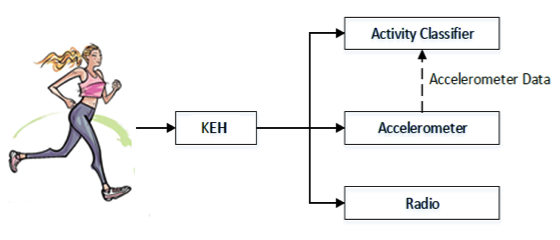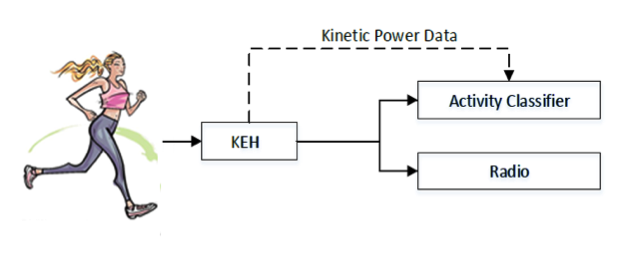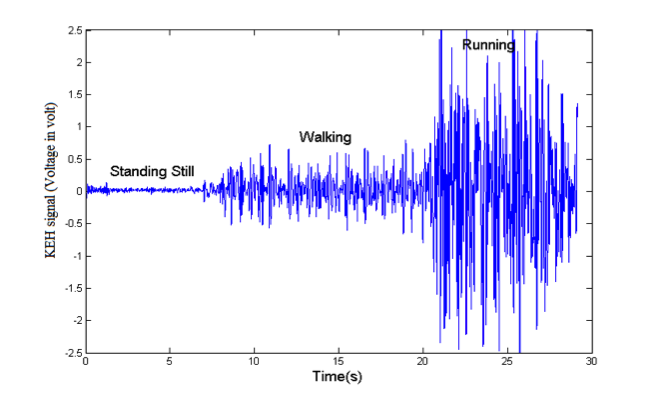HARKE: Human Activity Recognition using Kinetic Energy Harvesting
Conventional human activity recognition (HAR) relies on accelerometers to frequently sample human motion (acceleration). Unfortunately, power consumption of accelerometers becomes a bottleneck for realising continuous sensing driven applications such as HAR.
Possible Solution
One possible solution is to use the recent advancements in kinetic energy harvesting (KEH) hardware for realising pervasive self-powering HAR. However, the amount of power that can be practically harvested is limited. Power requirement of accelerometer for HAR ranges between 35-515% of the harvestable kinetic energy.

Our Proposal
We propose to use the Kinetic energy harvesting (KEH) signal for classifying human activities instead of using accelerometer signal. We refer to this approach as HARKE, which stands for Human Activity Recognition from Kinetic Energy. Our proposal is based on the fact that different human activities produce different amounts of kinetic energy; hence kinetic energy contains information that can be used to detect activity. By not using an accelerometer, a significant percentage of the limited harvestable energy can be saved and used to improve the quality of radio communication.

Demonstration
To demonstrate our proposal, we designed a wearable device to collect real KEH data. The figures below show the internal and external appearance of the experimental device.

The output of the wearable device for three different activities is shown in the figure below. It shows that the KEH signal contains information which can be used to infer human activity demonstrating the viability of HARKE.

Results
We evaluate the performance of HARKE using three different activity sets from three different applications (sport, home monitoring and indoor positioning), each containing between 3-8 different activities to be classified. The K-nearest neighbour (KNN) classifier has been used in our analysis. The table below shows HAR accuracies of accelerometer-based and HARKE architectures. HARKE accuracies varied between 74% to 98% depending on the activity set. The average accuracy over all activity sets is 85%, which is within 12% of what could be achieved with an accelerometer without any power constraints.
